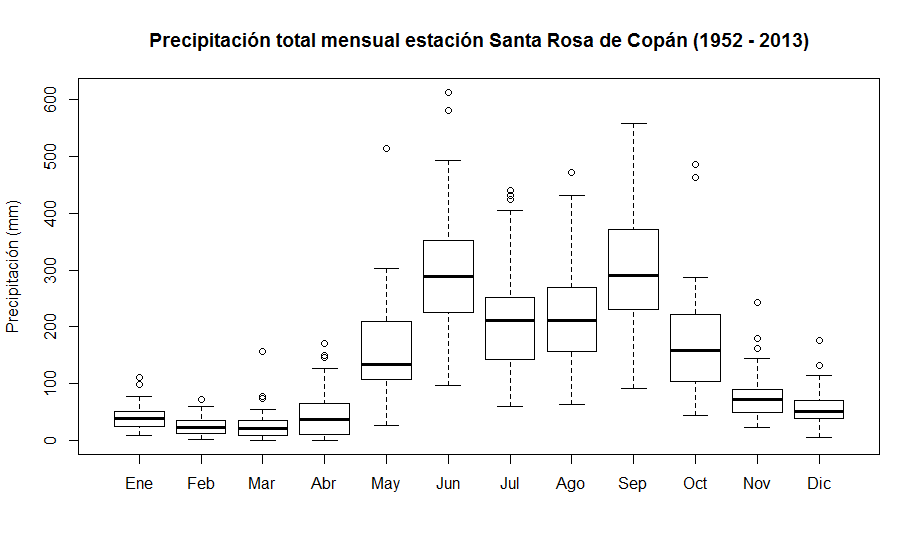How to explain climate information to farmers

Climate information at a glance may not tell much to a farmer; the PICSA approach helps bridge the information gap to reach more farmers so they can make better decisions, under effective mechanisms of communication and use.
In the community of Tierra Fría Primera in Honduras, it is common to hear this kind of comments from the farmers:
When will the rain start?... I have not idea... neither how long it will last. Before, in May we were already planting, nowadays we have waited until June to plant and the rain has been a little weird and we have lost our crops”.
"The last year, the rain season was good, as we always would like; but now we don’t know when the rain will start, neither how it will be”.
These comments highlight how unpredictable the rainfall season has become, what was regular a few years ago that now may be delayed or anticipated.
It is frequent to find farmers who say that they sow by tradition at the beginning of the rainy season but with great uncertainty about the rainfall during the agricultural season. Therefore, it is necessary for farmers to have access to agro-climatic information (historical, monitoring and forecasting) in a timely and reliable manner, implementing effective mechanisms for communication and use of information. But how difficult can it be?

Total monthly rainfall station Santa Rosa de Copán (1952-2013). Source: COPECO
The graph above shows the historical precipitations of six decades of measurements in Santa Rosa de Copán (Honduras), which at first sight may not tell much to a farmer. How can we explain this information of historical rainfall and climate variability, and how is this connected with production? The solution: the Participatory Integrated Climate Services for Agriculture (PICSA) Field Manual.
Timely and reliable agro-climatic information for Honduran farmers
Since 2016 in Honduras, Local Participatory Agroclimatic Committees (LPAC) have been used as an adaptation strategy to reduce climate risks. The main product of these committees is the agroclimatic newsletter, and PICSA will be the bridge through which these bulletins will reach more farmers to make better decisions based on climate information (water requirements, sowing and harvesting, agricultural practices, selection of crop type and / or crop variety).
Currently, Honduras has six LPACs throughout the country, in the departments of El Paraíso, Choluteca, Comayagua, Olancho, Intibucá and Copán; and in this last one the Santa Rita CSV is located, which is one of the four Climate-Smart Villages (CSV) in which the CGIAR Research Program in Climate Change, Agriculture and Food Security (CCAFS) is working to help smallholder farmers adapt to climate change.
In this regard, Santa Rita CSV offers a perfect field laboratory to implement a pilot PICSA, adapting the implementation manual to the local context, in partnership with the Tropical Agricultural Research and Higher Education Center (CATIE), the Commonwealth of Municipalities of the Maya route (Mancosaric) and with the support of the PICSA developers, the Walker Institute of the University of Reading.
Path of implementation
PICSA is the tool that responds to the need to strengthen the climate component within our methodology of field schools" (Facilitator of SEDUCA - SAG Honduras)
During the week of 6 to 10 of March, CCAFS researchers Diego Obando, Diana Giraldo and Efraín Leguía met in Honduras with the objectives of making a diagnosis of regional and local actors, as well as the ongoing initiatives, for defining roles in the implementation of PICSA; socializing with these actors the work at the Santa Rita CSV, and making a plan and schedule for the implementation of PICSA, in line with existing initiatives in the area.

Proposed scheme for the implementation of PICSA at Santa Rita CSV.
Institutions of the Honduran government, as well as international cooperation projects, after the meetings held on using PICSA in the CSV in a "bottom up" way, have expressed their interest in being part of the implementation, emphasizing that it would mean a contribution to their own projects and responding to the need to communicate agro-climatic information to farmers to make decisions.
For more information you can contact Diana Giraldo, leader of the AgroClimas project, Efraín Leguia and Luis Alfonso Ortega, coordinators of the climate-smart villages.



